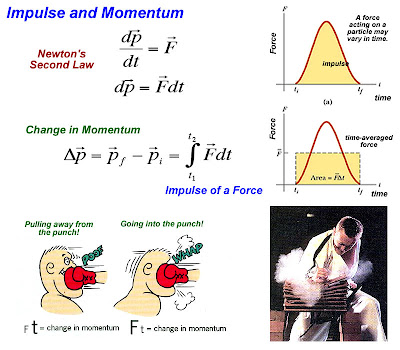
Again, remember always put the negative science because that's what's gonna give you negative impulses. Now I've got this area right here which is the base of two and a height of negative five. So this is gonna be two times negative five. Here is gonna be one half the base is too, and the height is actually negative five here, that's the force. So the area two is going to be the area of this rectangle. So what I can do is I can break this up into a triangle, then this is a rectangle and then this is going to be another sort of triangle. So a two is gonna be basically all the negative stuff, right? All the areas below the X axis. So, if you go ahead and work this out, what you're gonna get, you're gonna get 30 you're gonna get 30 right here. And that this is gonna be the area of this guy right here, which is this area of the rectangle, which is just the base which is to and then the area and the height which is 10. So this is gonna be one half of two times 10. So, remember that the area of a triangle is one half base times height. So the base is equal to two and the force is equal to 10. So really if I sort of break this up using this triangle right here, using this line, this is gonna be a triangle. And then just, you know, just add everything up together. Break some stuff up and do a bunch of triangles and rectangles. All I have to do is just add together these areas here. Right? So this is like this is T equals nine. I'm going to call this a one and this area over here from 4 to 9 seconds. So I'm gonna call This guy right here, the area from 2-4. So what I'm gonna do is say that the air that the impulse, I'm just basically going to break up this graph into two different sections here. So we say here, this is actually just equal to the area that's underneath this curve right here. Except we can't really use this formula because this force constantly changing over time. So, remember that your momentum, or sorry, that your impulse in part A is going to be F. So we want to calculate the impulse that's delivered to the toy car. And it's sort of due to this changing force here that we have. So, we have a remote controlled car that is moving forwards and backwards. So, let's take a look at an example here. It's really the letter that's different versus delta T. But the rule is actually gonna be the same, right? So areas above the X axis are actually gonna be positive impulses because the force is going to be positive, Right? So you're positive force, positive impulse and the areas below are just gonna be negative impulses like this.

It's the same idea here when you have F versus T graphs, right? Except instead of calculating the area under this craft and that being the work the area underneath these efforts to graphs is really just going to be the impulse. So if you have an area like this, this is going to be positive work because your forces positive here on the side of the axis, areas below the X axis were negative works because the force is negative. And we said that areas above the X axis, we're going to be positive work. X graph, the area under the graph was going to be equal to the work. Now when we talked about work, we said that one way to calculate work was if you're given an F vs.

But the idea is gonna be very straightforward, it's gonna be very similar to something we've already seen before.

#IMPULSE PHYSICS VIDEO TENNIS HOW TO#
So I'm gonna show you how to calculate impulse by using these graphs here. Hey guys, so in some problems are going to be given force versus time graphs, like this graph over here, and you're gonna be asked to calculate the impulse.


 0 kommentar(er)
0 kommentar(er)
